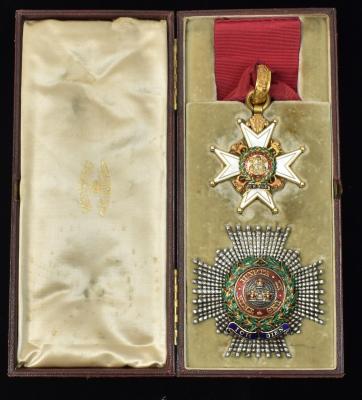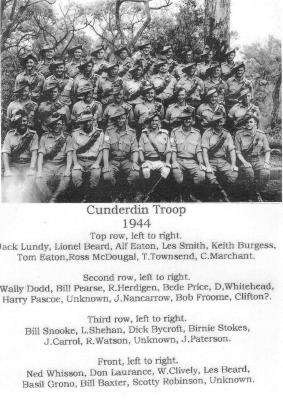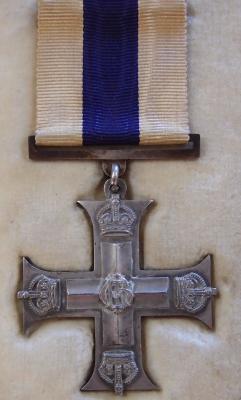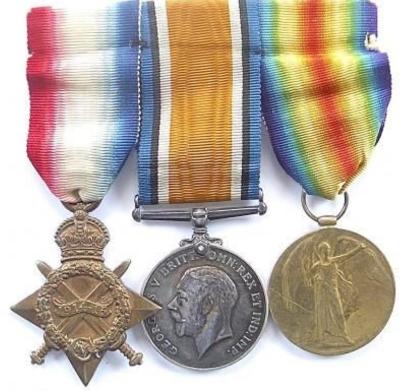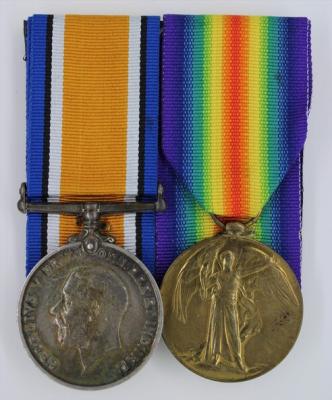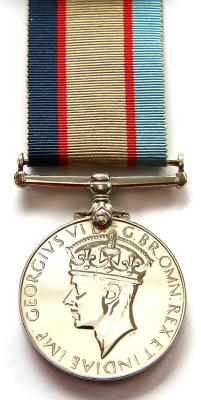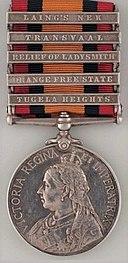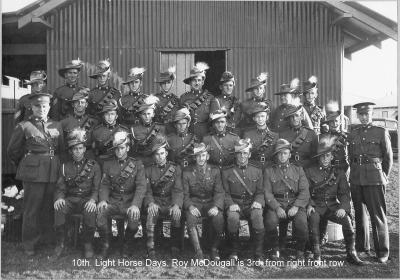Medal - 1914-15 Star
The 1914-15 Star based on the design of the earlier 1914 Star, is a four-pointed star of bright bronze, ensigned with a crown, with a height of 50 millimetres (62 millimetres with the ring suspension included) and a width of 44 millimetres. The medal and suspension assembly was struck in one piece. The obverse has two crossed swords with their blades upwards, the points and grips of which form what might appear to be four additional points to the star. The swords are overlaid by a wreath of oak leaves, with the Royal Cypher of King George V at the base of the wreath and an overlaying central scroll inscribed "1914–15". The reverse is plain and is impressed with the recipient's number, rank and name.
The ribbon is 32 millimetres wide and has the red, white and blue colours of the flag of the United Kingdom in shaded and watered bands. The same ribbon was used for the 1914 Star.
The 1914–15 Star is a campaign medal of the British Empire instituted in December 1918 which was awarded to officers and men of British and Imperial forces who served in any theatre of the World War 1 against the Central European Powers between 5 August 1914 and 31 December 1915 provided they had not already received the 1914 Star. The medal was never awarded singly and recipients also received the British War Medal and Victory Medal.
The creation of the 1914 Star for the original British Expeditionary Force, who served in France and Flanders up to November 1914, led to demands from the Australian and other dominion governments for medallic recognition for their original contingents who had fought at Gallipoli and elsewhere. This led to a proposed Gallipoli Star, for award to New Zealanders and Australians of the Australian and New Zealand Army Corps (ANZAC), but not to the British forces serving alongside them. Following protests by British parliamentarians and news media, the Gallipoli Star was never awarded and the 1914–15 Star, with its wider eligibility, instituted instead.
Details
Details
he 1914 Star, colloquially known as the Mons Star, was awarded only for service in France or Belgium between 5 August and 22 November 1914. Australians who participated in the 1914 Australian Naval and Military Expeditionary Force (ANMEF) to capture German colonies north of Australia received the 1914 -15 Star. In the collection of the Army Museum, the 1914-15 Star is found in over 200 medal groups. The trio of 1914/15 Star, War Medal and Victory Medal were popularly dubbed "Pip, Sqeak and Wilfred" after cartoon characters of the time. The War Medal and Victory Medal pair were often referred to as "Mutt and Jeff".
Multiple examples of this medal are retained as an ongoing memorial to the service and sacrifice of Western Australians. All medals are accessible and viewable with prior notice.
Australian Army Museum of Western Australia
Australian Army Museum of Western Australia
Other items from Australian Army Museum of Western Australia
- Medal - Knight Commander of the Most Honourable Order of the Bath (KCB)
- World War 2, Australia, Western Australia Wanneroo, A Squadron, 10 Light Horse, 1944
- World War 2, Australia, Western Australia, Wanneroo, Cunderdin Troop,10 Light Horse, 1944
- Inter-War, Australia, Western Australia, Guildford, McDOUGALL, 10 Light Horse
- Medal - Military Cross (MC)
- Medal Group World War 1 - "Pip, Squeak and Wilfred"
- Medal Group World War 1 - "Mutt and Jeff"
- Australian Service Medal 1939-45
- Medal - Mentioned in Despatches Insignia
- Queen's South Africa Medal (QSA)
- King's South Africa Medal (KSA)
- Inter-War, Australia, Western Australia, Guildford, McDOUGALL,10 Light Horse
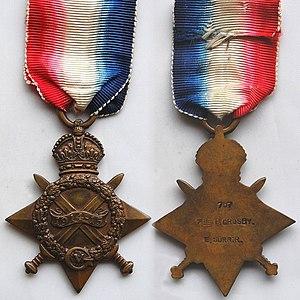
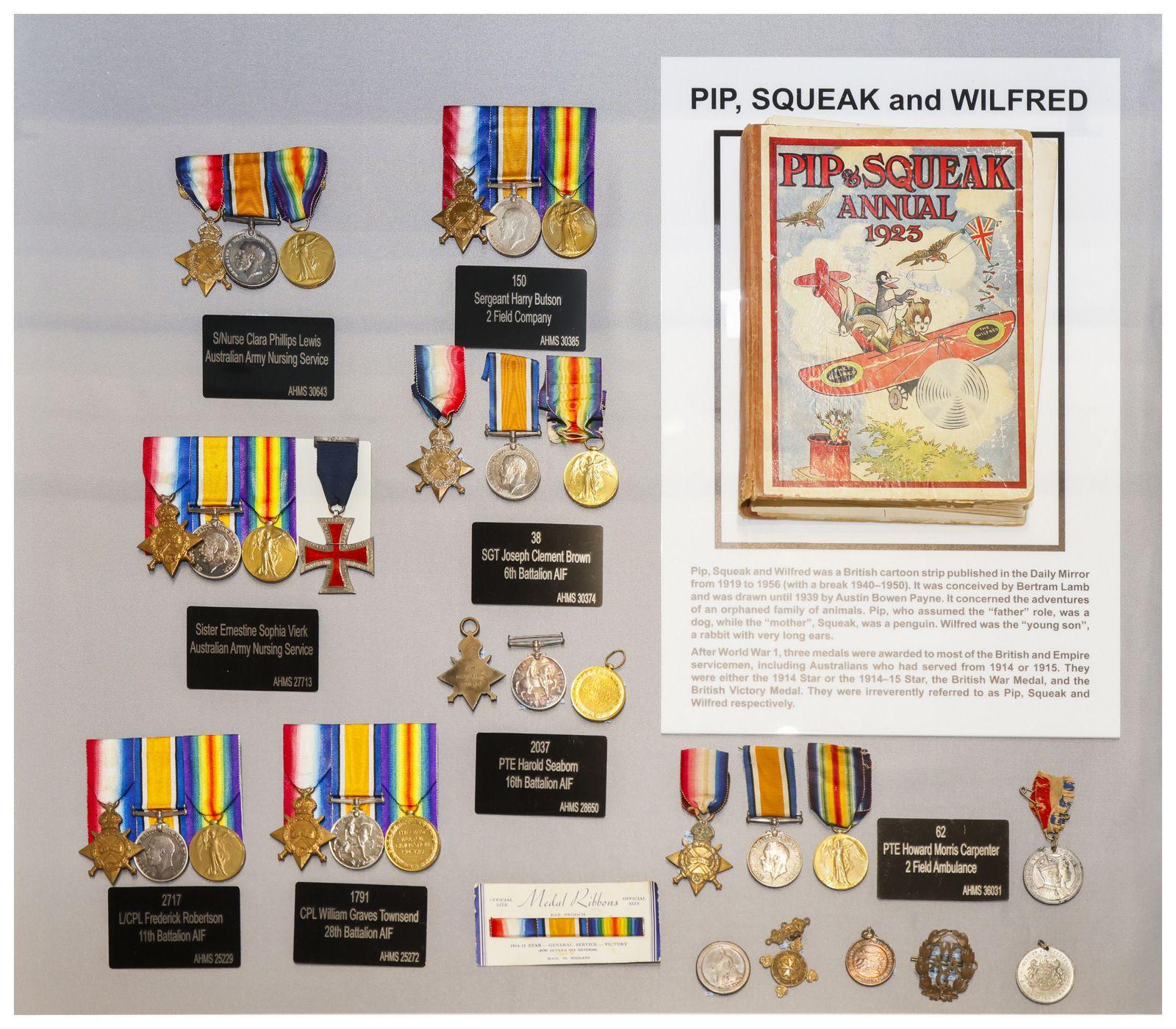
Scan this QR code to open this page on your phone ->

